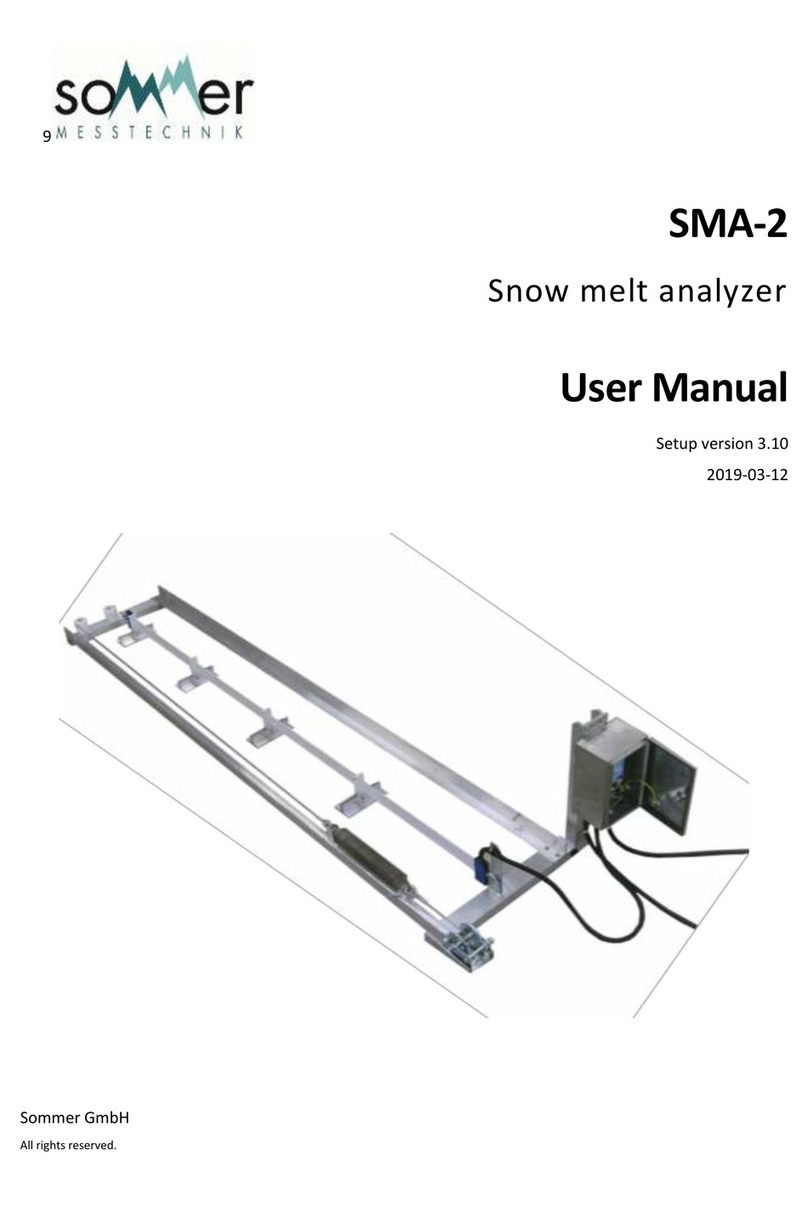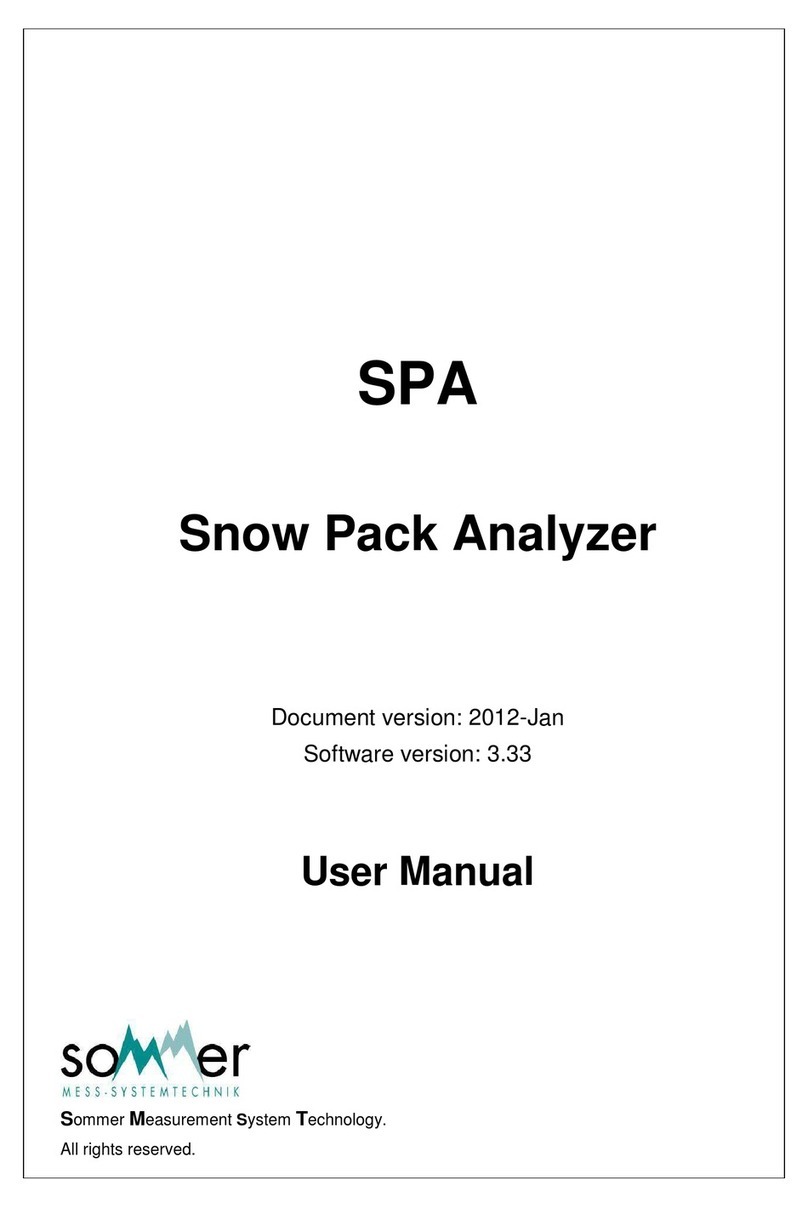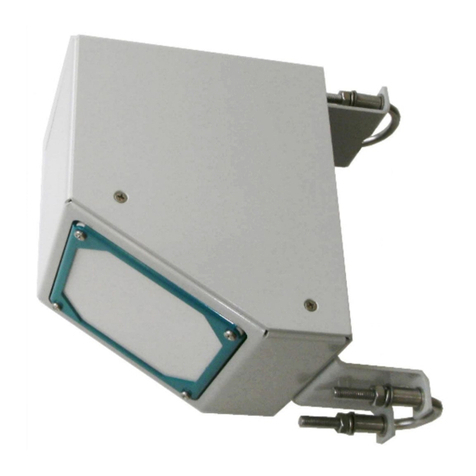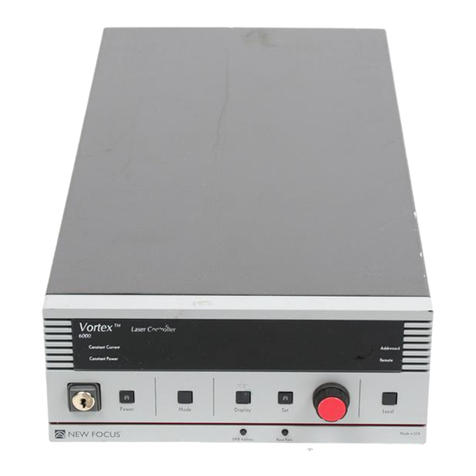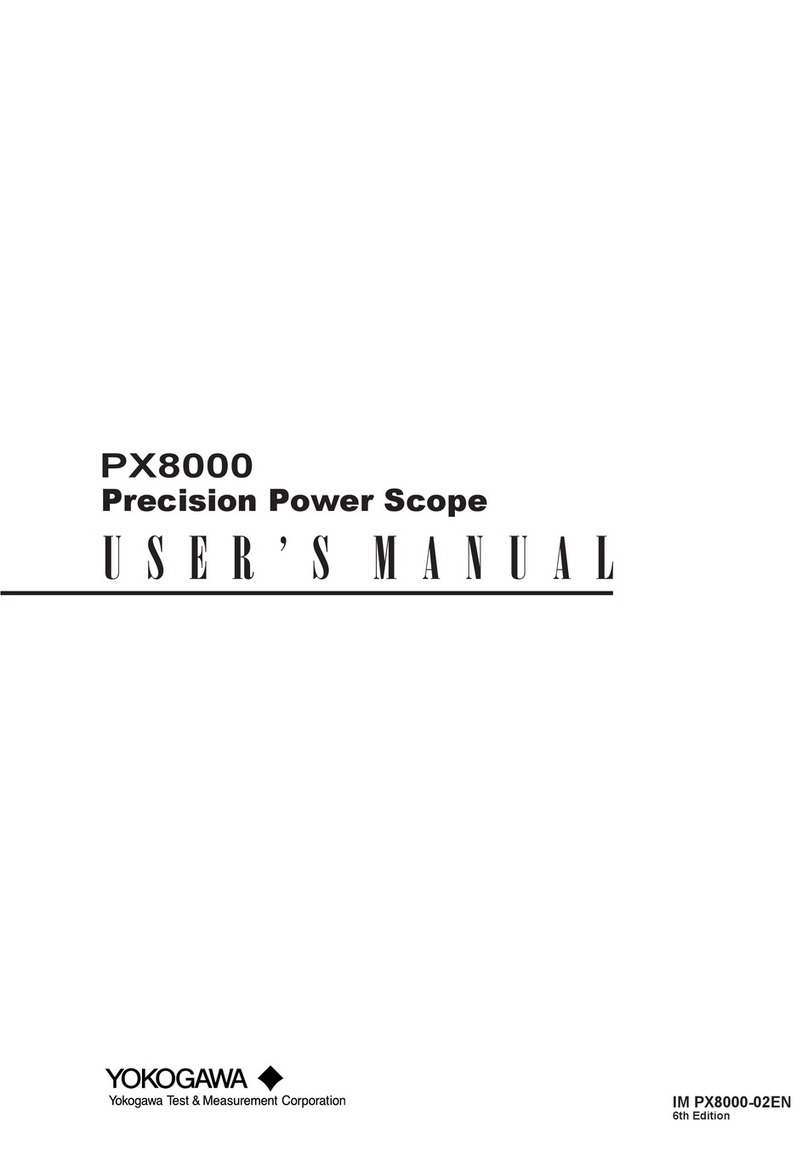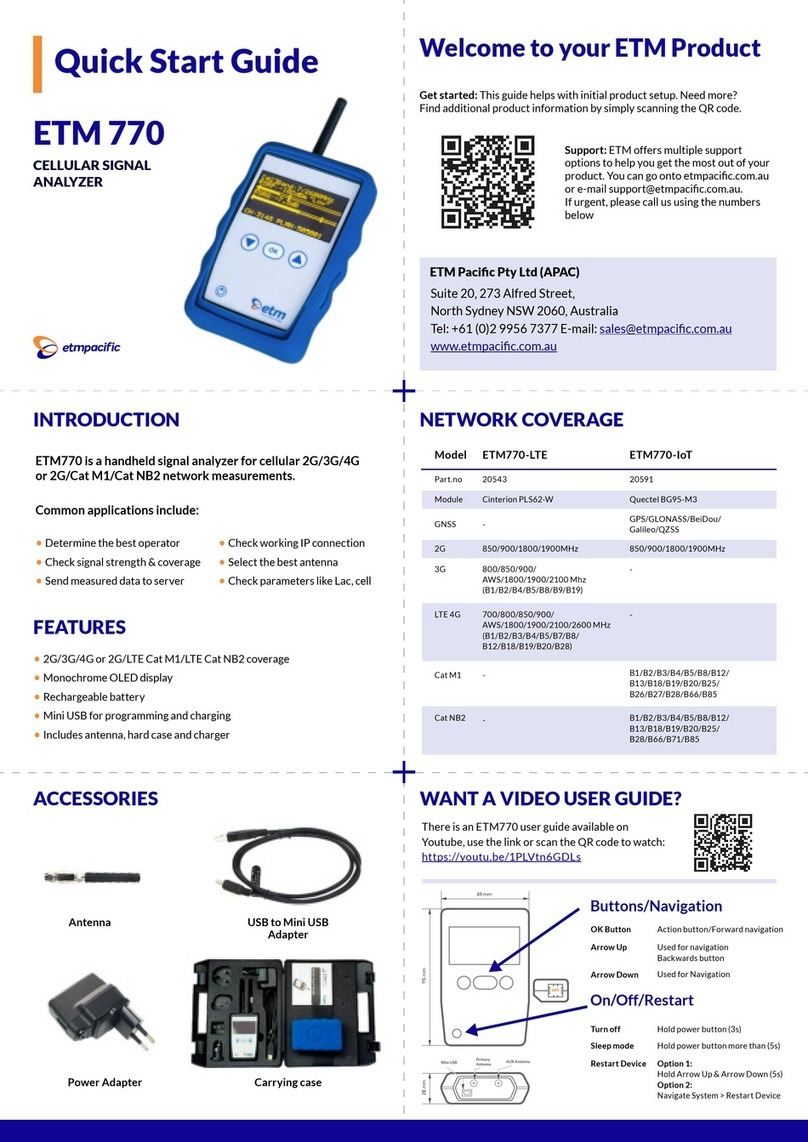SOMMER TQ-S Tracer User manual

TQ-S Tracer
Mobile Discharge Measurement System
Based on the Tracer Dilution Method
User Manual
Manual version: V03
2014-12-09
Sommer GmbH | Strassenhäuser 27 | AT-6842 Koblach | Austria | +43 5523/55989
All rights reserved.

Table of contents
1. Introduction.............................................................................................................................................. 1
2. Contents of assortment .......................................................................................................................... 1
2.1. TQ-Commander Versions.................................................................................................................. 1
2.2. Scope of delivery ............................................................................................................................... 2
2.3. USB Bluetooth adapter...................................................................................................................... 6
3. Technical specifications ......................................................................................................................... 7
4. Charging and operation of the TQ-Amp................................................................................................ 8
5. Tracer dilution method............................................................................................................................ 9
5.1. Measurement principle ...................................................................................................................... 9
5.2. Requirements .................................................................................................................................. 10
5.3. Selection of the measurement location ........................................................................................... 10
6. Before you start ..................................................................................................................................... 13
6.1. Installation of the TQ-Commander .................................................................................................. 13
6.2. Setting the menu language.............................................................................................................. 13
6.3. First-time setup of TQ-Amps via Bluetooth...................................................................................... 13
6.4. Removing a sensor.......................................................................................................................... 15
7. Measurements with TQ-Commander................................................................................................... 17
7.1. Introduction...................................................................................................................................... 17
7.2. Connection of the conductivity sensors........................................................................................... 19
7.3. Input of the measurement site information...................................................................................... 19
7.4. Calibration of the conductivity sensors............................................................................................ 20
7.5. Measurement and discharge calculation......................................................................................... 24
7.6. Post processing ............................................................................................................................... 28
8. Import / Export of data .......................................................................................................................... 31
8.1. Export Data...................................................................................................................................... 31
8.2. Import data....................................................................................................................................... 31
9. Appendix................................................................................................................................................. 33
9.1. No internal Bluetooth adapter found................................................................................................ 33
9.2. Optimizing the Bluetooth range ....................................................................................................... 33
9.3. Deactivating the internal Bluetooth module and enabling the Bluetooth dongle............................. 34
9.4. Mixing the calibration solution ......................................................................................................... 36
9.5. Tables.............................................................................................................................................. 38
Safety information
Please read this entire manual before setting up or operating this equipment. The non-compliance of this
manual could result in damage to the equipment. Also in the case of non-compliance injuries of individuals
cannot be excluded totally.
Do not use this equipment in any manner other than that specified in this manual.

Sommer GmbH 1
1. Introduction
The TQ-S System consists of at least one conductivity sensor and the software TQ-Commander. The TQ-
Amp is a measuring device with Bluetooth data transmission to which a conductivity probe can be
connected. It is possible to use up to four conductivity sensors at the same time when using TQ-
Commander. This software supports you in conducting a measurement and when performing post
processing of measured data. TQ-Commander is available for Microsoft Windows PCs and Laptops as
well as for Windows Mobile devices.
2. Contents of assortment
2.1. TQ-Commander Versions
oWindows 98, Windows 2000 SP4, Windows XP:
- Microsoft .net Framework 2.0 or higher
- Microsoft Installer 3.0 or higher
oWindows Vista, Windows 7, Windows 8: No additional installations required
Mobile version:
oWindows Mobile 5 to 6.5, required:
- Microsoft.net Compact-Framework 2.0 or higher

Sommer GmbH 2
2.2. Scope of delivery
TQ-S Tracer for conductivity measurement - Versions:
oConductivity sensor(s) and accessories separated in two cases
oConductivity sensor(s) and accessories together in one case (execution for normal base conductivity)
oConductivity sensor(s) with heavy armor and 25 m cable spool
2.2.1.Conductivity measurement
Black transport case (conductivity sensors):
Conductivity Case:
Conductivity sensors:
1-3 conductivity sensors with one TQ-Amp each
Black transport case with 2 conductivity sensors (2 case
version)
Conductivity sensor

Sommer GmbH 3
Conductivity probe with heavy armor on cable spool:
Cable spool for conductivity measurement:
Conductivity
sensors
One piece conductivity sensor with heavy armor and one TQ.Amp each per
cable spool.
Cable spool with one conductivity sensor with
heavy armor
Conductivity probe with heavy armor
(unscrewed)

Sommer GmbH 4
Blue transport case (accessories):
Conductivity Case:
Pipette:
500 µl Pipette with additional replacement tips
Jars:
Volumetric flask 250 ml for calibration purposes
Measuring cup with handle 500 ml
Vessel for calibration solution
Measuring cup without handle 600 ml
Other:
USB flash drive (documentation and software)
USB Bluetooth adapter class 1
Charger for every TQ-Amp
Quick start guide
Letter stickers for individual labeling of the conductivity sensors
Blue transport case with accessories (2 case version)

Sommer GmbH 5
2.2.2.Conductivity measurement
Blue transport case (conductivity sensors and accessories):
Conductivity case
Number of
TQ-Amps:
2 pieces
Sensors:
1 conductivity sensor per TQ-Amp
Other:
Letter stickers for individual TQ-Amp labeling / determination
Pipette:
500 µl pipette with additional reserve tips
Jars:
Vessel for calibration solution
Stainless steel measuring cup
Volumetric flask 250 ml
Measuring cup with handle 600 ml
Other:
USB flash drive (documentation + software)
USB Bluetooth dongle (Class 1)
Chargers for every TQ-Amp
Quick start guide
Blue transport case with conductivity sensors and accessories (1 case version)

Sommer GmbH 6
2.3. USB Bluetooth adapter
The supplied USB Bluetooth dongle can be used to
establish a connection with the conductivity sensors with a
computer that has no integrated Bluetooth module or to
increase the maximum transmission distance.
The supplied class 1 Bluetooth dongle provides a
connectivity reach of up to 100 m (see chapter 9.2).
The USB Bluetooth dongle is normally installed
automatically and does not require a manual driver
installation. If you are asked to manually choose a driver
during the automatic installation, select “automatically
search for drivers online”.

Sommer GmbH 7
3. Technical specifications
Conductivity
General
Measurement principle
Tracer dilution method (slug injection)
Application
Discharge up to 10 m³/s
Probes
Conductivity probes
Measure range
0 … 5000 µS/cm
Resolution
0.1 µS/cm
Working temperature
-20 °C … +60 °C
Other properties
Integrated temperature compensation
Measurement value linearization according to EN 27888: 1993 for natural
waters
TQ-Amp (data acquisition with Bluetooth)
Interval of saving
1 s
Data transfer
Bluetooth class 1
Working temperature
-20 °C … +60 °C
Energy supply
3 x 1.5 V batteries size AA or
3 x 1.2 V / 2500 mAh NiMH accumulators size AA
Operation time with
3 x 2500 mAh
accumulators
50 h
Recharge time
ca. 10 h

Sommer GmbH 8
4. Charging and operation of the TQ-Amp
The TQ-Amp (measurement value acquisition /
Bluetooth transmission):
The TQ-Amp is delivered with 3 pieces of NiMH accumulators with 2500 mAh each. From the full charge
condition an operational duration of up to 50 hours can be reached until the battery voltage falls below
3.45 V at which point it is recommended to recharge or replace the batteries.
After connecting the 12 V power supply the accumulators are charged controlled by the TQ-Amp.
The 12 V power supply can remain connected to the TQ-Amp also if the charging process is
completed.
The accumulator status is shown permanently in
TQ-Commander:
Meaning of the Charge LED:
LED Charge/Error
Color
Meaning
off
12 V power supply not connected or charging process completed
yellow
Charging process active
red
An error occurred during the charging process, charging aborted.
orange
An error occurred during the charging process, the charging
process nevertheless is continued.

Sommer GmbH 9
5. Tracer dilution method
5.1. Measurement principle
The tracer dilution method requires a slug injection of a defined amount of tracer substance (in this case
salt) into the water body to be measured. Prior to the injection at least one conductivity probe has to be
placed in the water body downstream of the injection site. The conductivity sensor is used to measure
and record the concentration of the tracer substance in the water.
The conductivity sensor outputs the currently measured conductivity of the water. To define a relation of
the measured values with the actual concentration the probes need to be calibrated to determine the
calibration factor (k). This calibration factor is not only depending on the used tracer substance and the
probes but also on the river’s or canal’s water. Therefore Sommer Messtechnik strongly recommends
performing a calibration of the probes prior to every measurement.
The calibration of the probes is of equal importance as the absolute accuracy of the used probes with
regards to the accuracy of the discharge determination. Accordingly Sommer Messtechnik suggests using
tracer solutions with a concentration of 10 g/l, which can be carefully and thoroughly prepared by the end
user (for more information see chapter 9.4).
The maximum deflection must be at least 200 µS/cm and/or 100% higher than the base value.
The discharge calculation is based on the injection amount (m), the previously determined calibration
factor (k) and the measured values during the passage of the tracer substance in the form of the area
between the curve and the base value (A).
Q … Discharge
m … Amount of tracer substance
k ... Calibration factor
A … Area covered by the curve
(measured values)
µS / cm
Base value
Maximum deflection > 200 µS/cm and/or 100%

Sommer GmbH 10
The supplied software TQ-Commander guides the user through the complete measurement procedure,
starting from the calibration through to issuing the measurement report. The necessary steps and
requirements are described in this manual.
5.2. Requirements
The following requirements have to be fulfilled to get good and correct measurement results:
oConstant water flow during the measurement
oConstant base value during the measurement
oEven distribution of the tracer in the whole river cross section (vertical and horizontal) at the position of
the conductivity sensor(s).
oThe whole tracer has to pass the sensors completely (no backwater…) meaning that after the tracer
substance passed the sensor the measured value should be very close to the base value (see above
diagram).
5.3. Selection of the measurement location
To ensure a sufficient mixing of the tracer substance the following topographic aspects should be
considered.
Positive:
oVarying cross sections
oHigh roughness
oStones and rocks
Negative:
oBackwater areas (pools, rollers, dead water zones …)
oLow turbulence
oHigh vegetation
Especially consider the following points:
1. Suitable tracer injection site
2. Sufficient mixing distance
3. Appropriate location for placing the conductivity sensors in the river
Ad 1: Tracer input
The goal is to input the complete tracer substance (injection amount) as fast and as completely as
possible in one single impulse (with swift rinsing of tracer remains) into the main stream. There should be
not vegetation present at the injection site.
Important: Always take care of your own safety at the tracer input location

Sommer GmbH 11
Input form:
The tracer injection has to be carried out in dissolved form.
Input quantity:
The input quantity depends on the total discharge, the base value and the mixing distance.
The more tracer substance is injected, the greater the maximum deflection of the measured values.
The goal is to achieve a maximum deflection of at least 200 µS/cm respectively 100% of the base value
(see above diagram).
The rule of thumb to approximate the amount of tracer substance needed is 5 kg per m³/s of total
discharge. In case the resulting measurement curve shows that the maximum deflection is well below the
aforementioned minimum increase the measurement can be easily repeated with a higher amount of
tracer substance. In such a case the previous measurement result can be used to more accurately
estimate the total discharge of the river.
If the measured values exceed the probe’s detection limit of 5000 µS/cm the measurement result is
invalid. In such a case the measurement should be repeated with i.e. half the amount of tracer used in the
first attempt.
Ad 2: Selection of the mixing distance
The goal is a complete vertical and lateral distribution of the tracer substance at the measurement
location.
Rule of thumb: Mixing distance = 50-times the width of the water body to be measured (for low
turbulences)
Attention:The longer the mixing distance the better the mixing, but at the same
time the lower the maximum deflection and the longer it takes for the
complete tracer to pass the measurement location (this can be
compensated for by using a higher amount of tracer substance, i.e. > 5
kg per m³/s).
A shorter mixing distance (reduced down to 20-times the width of the water body) can be chosen
when the following preconditions are fulfilled:
oHigh turbulences
oChanging cross sections
oHigh roughness
oPresence of stones and rocks
Ad 3: Positioning of the probes
The goals are:
oGood circulation of water around the probes
oStable position of the probes
oProbes have to lie on the bottom of the river bed in high turbulent flows or hang in the water in low
tortuous flows.
Attention: Safety and accessibility at the measurement location must be considered!

Sommer GmbH 12
Attention: Avoid placing the sensors in mud or high vegetation, prevent the sensors
from floating in the water and avoid positions where air bubbles are
present.
Abstract:
The tracer substance has to be mixed up completely. For this purpose, choosing longer
mixing distances is better than shorter ones and using bigger amounts of tracer
substance is preferred to using smaller amounts. Tracer flowing through the sensors has
to be clearly visible in the measurement results and the maximum deflection must fulfill
the minimum requirement (> 200 µS/cm and/or 100% of the base value). After the tracer
passage the measured values should decrease to the base value.

Sommer GmbH 13
6. Before you start
6.1. Installation of the TQ-Commander
The software TQ-Commander is available on the supplied USB flash drive in the folders ”Software PC“
for the PC/Laptop version and ”Software Mobile“ for the Windows Mobile version.
6.2. Setting the menu language
The menu language can be selected by clicking on the ”Earth“-symbol in the main
menu bar.
6.3. First-time setup of TQ-Amps via Bluetooth
Attention: Before you plug in the supplied USB Bluetooth dongle (from now on called
“BT dongle”) please follow the steps listed below and check if an internal
Bluetooth module is available. Sommer Messtechnik strongly suggests
not to use an internal BT module and the supplied BT dongle at the same
time to avoid problems caused by incompatibilities. For further information
please see chapter 9.3.
oStart TQ-Commander.
oPower on all TQ-Amps, that will be used for the measurement and proceed by clicking on
Measurement (F9)
oIf a compatible internal BT module is available, it will be automatically detected and chosen for the
measurement. The user will be informed about the chosen BT stack via a pop-up dialog.
If the following message is displayed, no active BT module has been detected.
Please proceed with chapter Fehler! Verweisquelle konnte nicht gefunden
werden..
If the above dialog is not shown, an active and compatible BT module has been
found by the TQ-Commander and the system is ready to perform a measurement.
It is possible, that the connectivity reach of an internal BT module is not sufficient.
In this case please proceed with chapter 9.2.

Sommer GmbH 14
oClick New Sensors (F6) and wait until the search for the sensors is completed.
In the example shown on the right side three
sensors were found but not yet connected and
initialized.
If three devices are active this is exactly what
the screen should look like.
To identify the sensors please note the last four
digits of the sensor name, which show the TQ-
Amp ID.
The first part of the TQ-Amp ID may be
different to the ones shown in this example.
This part of the ID can be disregarded.
Every TQ-Amp is labeled with its ID.

Sommer GmbH 15
oClick on one of the listed sensors.
By clicking one of the sensors it will be
connected. The first time a sensor is
connected the dialog shown right will pop up.
oThe input of a description is only
necessary, if more than one conductivity
sensor is used for the TQ-Amp.
oAs ID the use of a capital letter is
recommended. An assortment of letter
stickers is included and can be placed
on the TQ-Amp.
oRepeat this process for all sensors, then ...
After establishing the connection and setting
up the sensor they are listed as green
entries.
To check the connection status on the TQ-
Amp please consult the “Connect”-LED,
which will now be switched on (green).
oAs soon as all sensors necessary for the measurement are connected, proceed by clicking Ok (F2).
oThe sensor setup is now complete and a measurement can be started by clicking Next (F2).
6.4. Removing a sensor
If a sensor is not needed any more, it can be disconnected by deactivating “Autoconnect” (see above
screenshot). To remove a sensor, please proceed as described below:
Menu Data (F10) Sensor

Sommer GmbH 16
Select the sensor to be
removed.
On the right side of the
program window the sensor
details are listed.
To deactivate the
“Autoconnect” this feature will
be disabled for the selected
sensor.
To delete the sensor click the
waste bin symbol.

Sommer GmbH 17
7. Measurements with TQ-Commander
7.1. Introduction
The measurement procedure
contains the following steps:
1. Switch on the TQ-Amps
2. Establish the Bluetooth-
connection
3. Input information about the
measuring site or station
4. Perform a calibration for the
compensation of the local water
characteristics (temperature
and chemical composition)
5. Perform the measurement of
the conductivity (Fluorescein /
Rhodamine WT) while the
tracer passes the sensors and
the discharge is automatically
calculated
The software TQ-Commander guides the user through all necessary steps of a complete measurement
after clicking on Measurement (F9) in the menu:
oConnecting the TQ-Amp (7.2) and if necessary performing the first-time sensor setup (Fehler!
Verweisquelle konnte nicht gefunden werden.)
oPlacing the probes in the water body to be measured to get them to the same temperature.
oInput of information for the report (Fehler! Verweisquelle konnte nicht gefunden werden.)
oCalibrating the sensors (Fehler! Verweisquelle konnte nicht gefunden werden.)
oEstimation of the tracer amount needed and injection of the tracer solution into the river.
It is important that the complete tracer amount is injected. In most cases the tracer
solution is prepared in a bucket for an easy and complete injection.
oPlacing the sensors in the water body (5.3)

Sommer GmbH 18
oInjecting the tracer solution, performing the measurement and report issuing (Fehler!
Verweisquelle konnte nicht gefunden werden.)
Table of contents
Other SOMMER Measuring Instrument manuals
Popular Measuring Instrument manuals by other brands
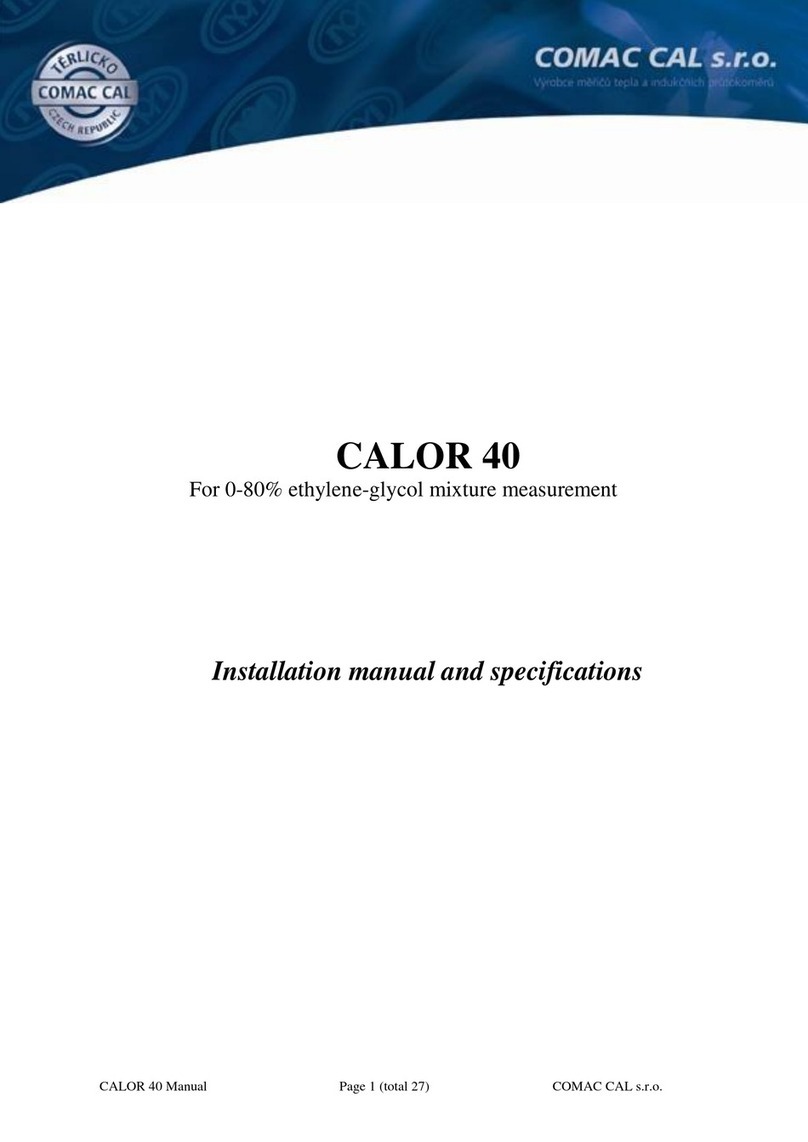
COMAC CAL
COMAC CAL CALOR 40 Installation manual and specifications

Circutor
Circutor CVM k2 manual
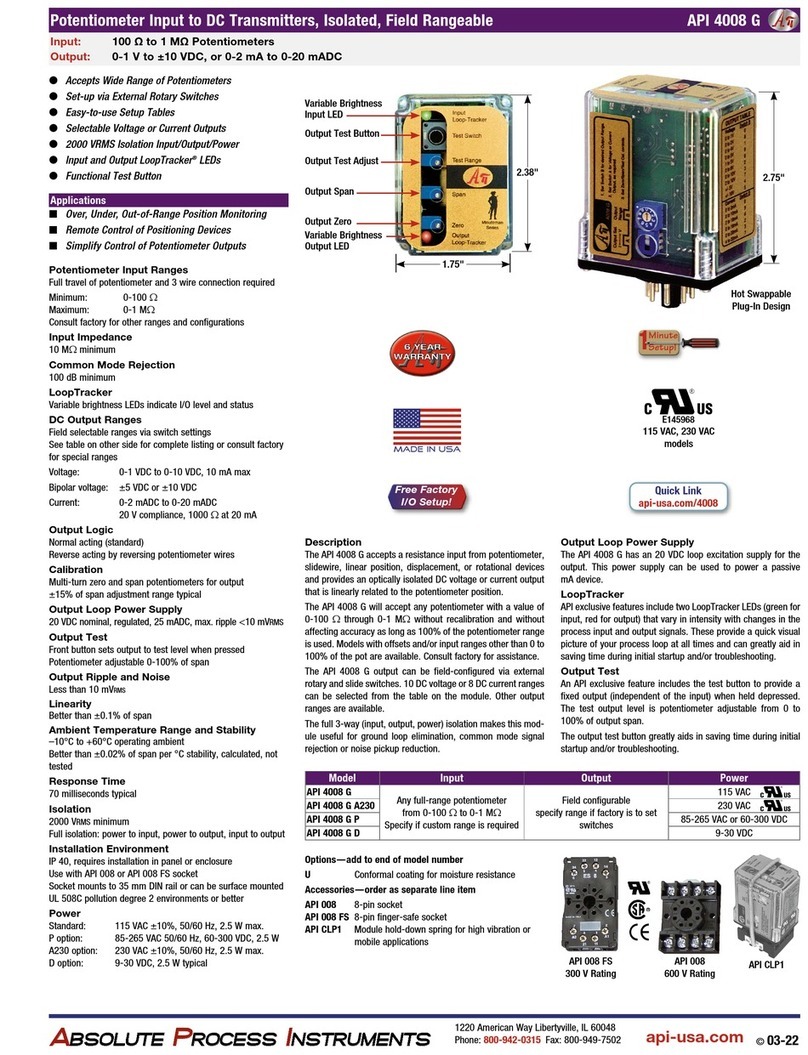
Absolute Process Instruments
Absolute Process Instruments API 4008 G quick start guide
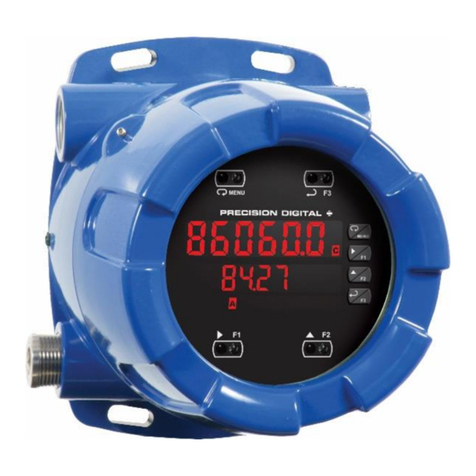
Precision Digital Corporation
Precision Digital Corporation ProtEX-MAX PD8-6060 instruction manual
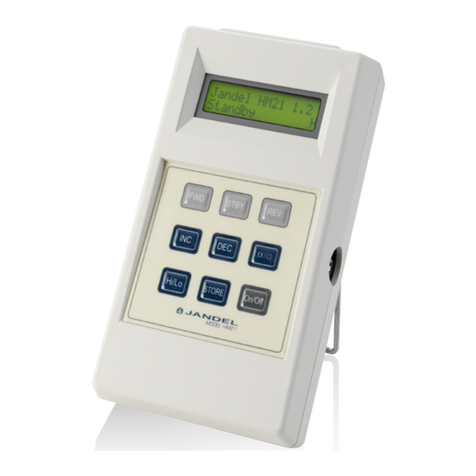
Jandel
Jandel HM21 manual
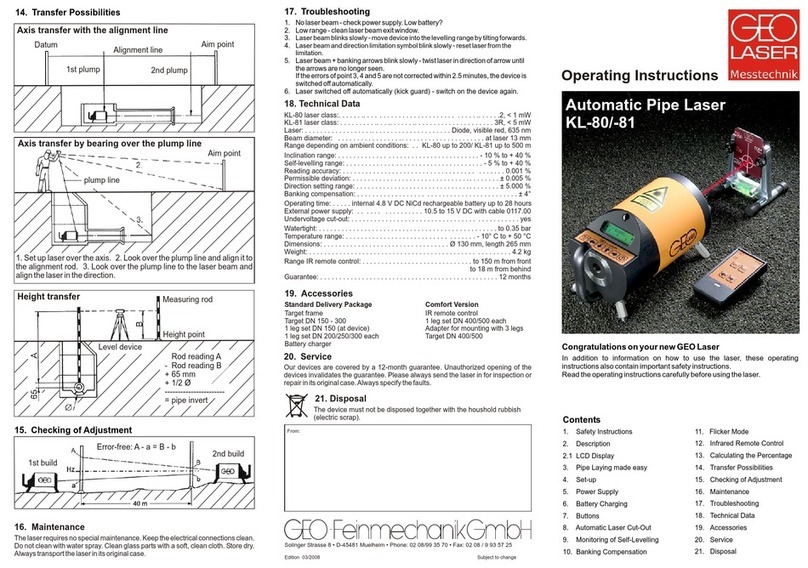
Geo
Geo KL-80 operating instructions
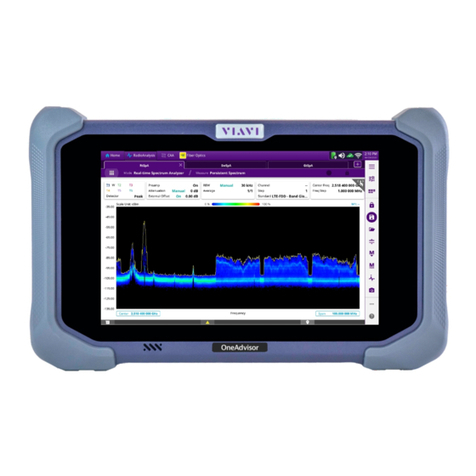
Viavi
Viavi OneAdvisor ONA-800 Getting started guide

Emerson
Emerson Daniel 3415 Maintenance and troubleshooting manual

Callaway
Callaway 300 manual
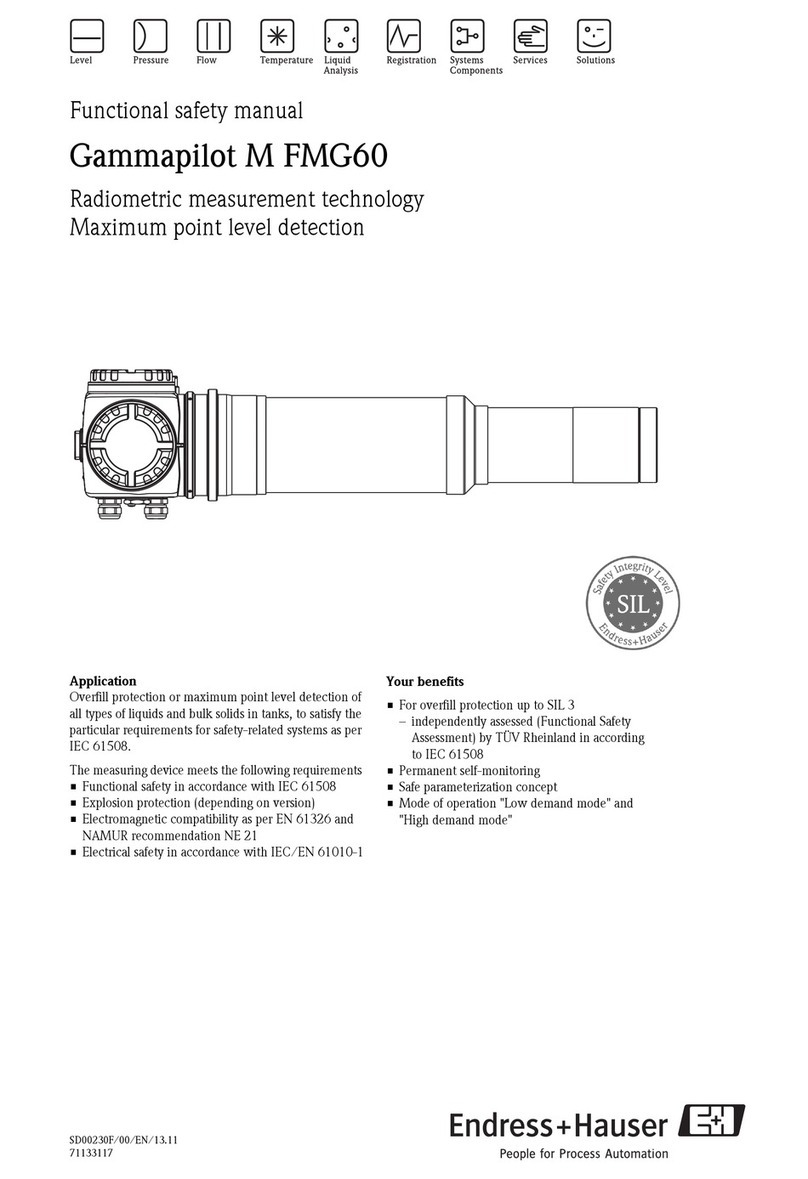
Endress+Hauser
Endress+Hauser Gammapilot M FMG60 Functional safety manual
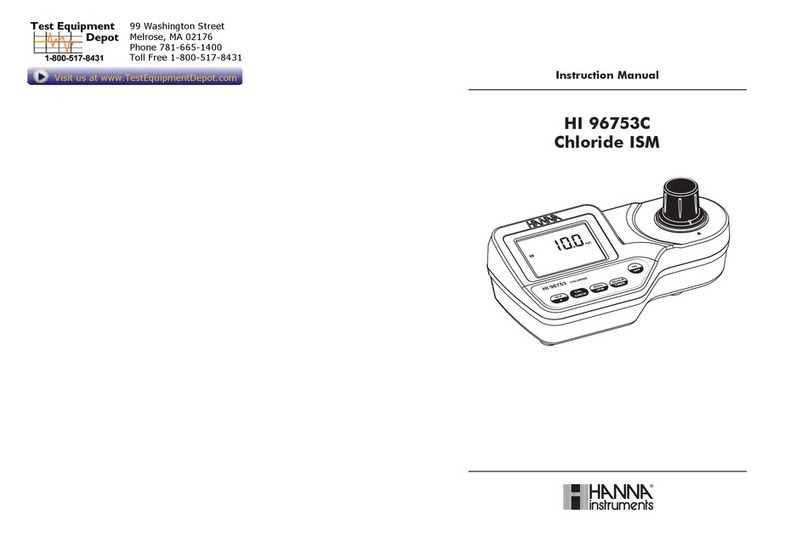
Hanna Instruments
Hanna Instruments HI 96753C instruction manual

Honeywell
Honeywell Elster EK280 Applications manual
